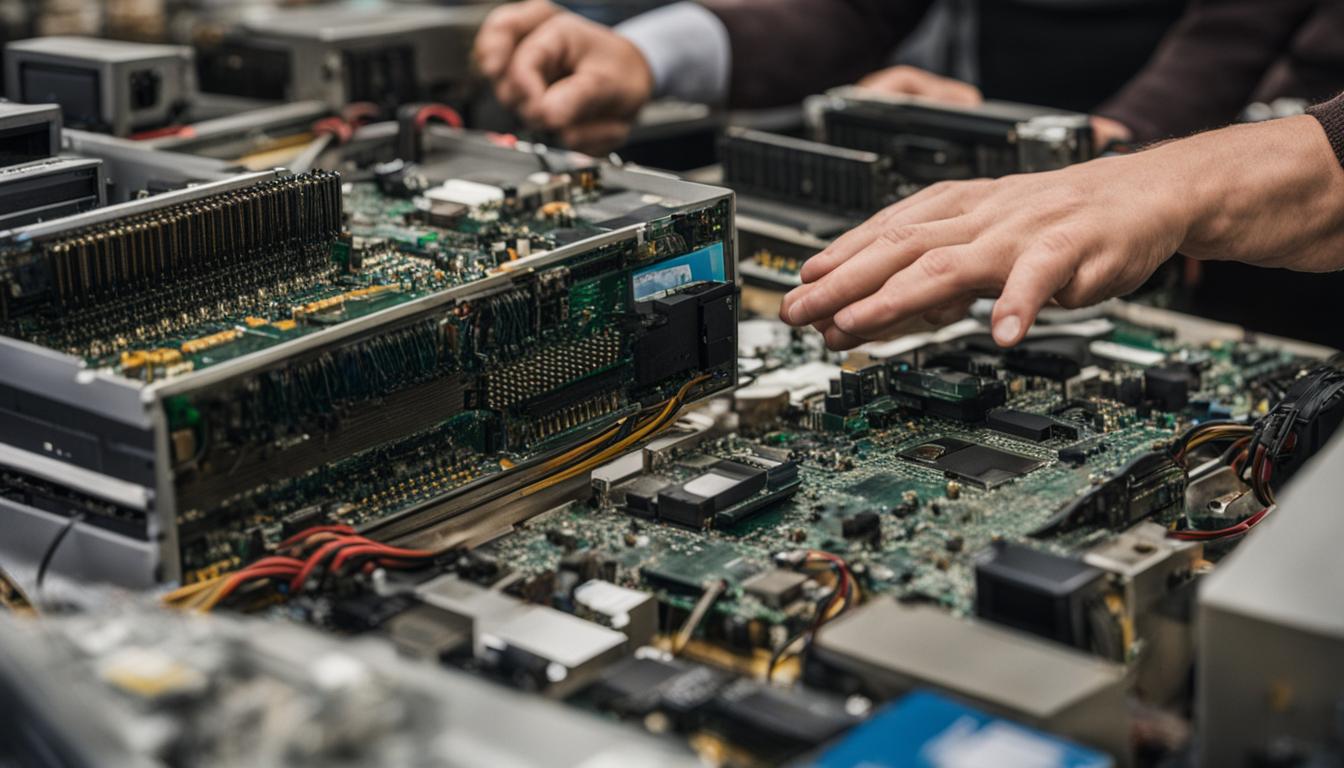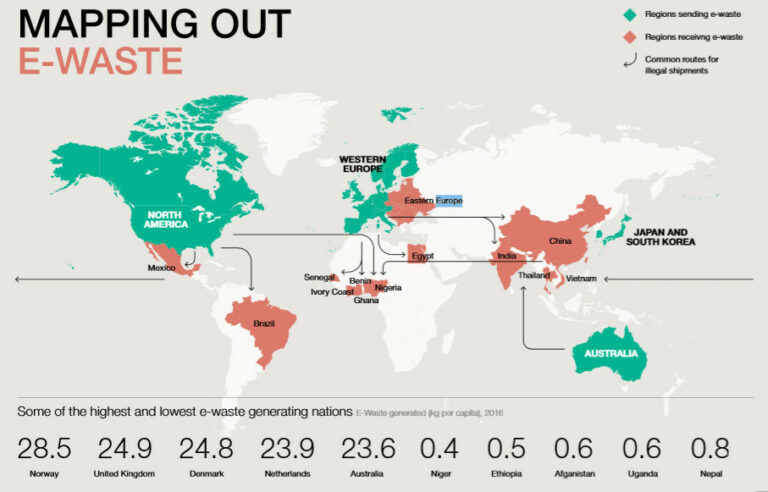Exploring the Grey Market: Risks and Rewards of Used IT Equipment
The used IT equipment market has become increasingly popular as companies seek cost-effective solutions for their networking and infrastructure hardware needs. The global chip shortage and the need to accommodate remote workers have strained IT budgets, leading businesses to consider alternative procurement options like the grey market. The grey market refers to the sale of new or refurbished devices through unauthorised distribution channels, often at lower prices.
However, buying from the grey market comes with risks, including questionable origins of the hardware, invalid software licences, lack of manufacturer warranty or support, and expensive inspection and licensing fees. Managed Service Providers (MSPs) can offer benefits like competitive pricing, configuration and integration support, flexible service options, and warranty and end-of-life support.
Key Takeaways
- The used IT equipment market provides cost-saving opportunities for businesses.
- The grey market poses risks such as questionable hardware origins and invalid software licences.
- Managed Service Providers offer benefits like competitive pricing and warranty support.
- Buying from the grey market can result in expensive inspection and licensing fees.
- Consider working with trusted partners and MSPs to navigate the risks of the grey market.
Understanding the Grey Market in the IT Industry
The grey market in the IT industry refers to the sale of new or refurbished IT equipment through unauthorized distribution channels. These channels may include discount websites or sellers without a local office or representatives. Grey market products can be counterfeit, stolen, illegally imported, or have substandard components. This raises concerns about performance, downtime, and data security for buyers. Grey market purchases may also result in invalid software licenses, limiting access to software updates and security patches. Furthermore, manufacturers often refuse to provide support or warranty for equipment not procured through authorized channels. Grey market transactions can incur expensive inspection and licensing fees, creating additional costs for buyers.
Counterfeit products are a significant risk when dealing with the grey market. These products are often made to resemble genuine IT equipment but lack the quality and reliability of the original items. Buyers may unknowingly purchase counterfeit products, leading to performance issues and potential security breaches. Stolen hardware is another concern. Equipment obtained through illegal means may have compromised security measures, making it vulnerable to unauthorized access or tampering. Illegal imports, on the other hand, may violate regional regulations and may not meet local safety standards or electrical requirements.
“Grey market transactions can be tempting due to the potential cost savings, but buyers need to be aware of the risks involved. It is essential to ensure that the equipment being purchased is genuine and sourced from authorized channels to avoid potential pitfalls.”
Table: Risks Associated with the Grey Market in the IT Industry
| Risks | Impact |
|---|---|
| Counterfeit products | Performance issues, security risks |
| Stolen hardware | Potential data breaches, compromised security |
| Illegal imports | Non-compliance with regional regulations, safety concerns |
| Substandard components | Lower performance, increased downtime |
Aside from counterfeit products and stolen hardware, the grey market can also involve the use of substandard components. These components may not meet the quality standards of authorized equipment, leading to lower performance and increased downtime. It is important for buyers to thoroughly evaluate the sources of their IT equipment to ensure that they are not compromising their network’s reliability, security, and overall performance.
In conclusion, the grey market in the IT industry poses significant risks to buyers. Unauthorized distribution channels can result in the sale of counterfeit products, stolen hardware, illegal imports, and substandard components. These risks can have detrimental effects on performance, security, and compliance with regulations. To mitigate these risks, buyers should prioritize purchasing equipment from authorized channels and thoroughly research and vet sellers before making any purchases.
The Impact of Grey Market Activity on Brands
The grey market distribution of products can have a significant impact on brand reputation. When products are sold through unauthorized channels, it strains relationships with authorized wholesalers, distributors, and retailers. These authorized partners expect exclusivity and proper handling of the brand’s products. However, once a product enters the grey market, the brand loses control over how it is displayed, packaged, handled, and shipped. This lack of control can lead to negative customer experiences, defective products, and ultimately, damage to the brand’s reputation.
Brands must realize the importance of maintaining control over their product handling and distribution. By ensuring that their products are sold exclusively through authorized channels, they can maintain a consistent brand experience for customers. Authorized wholesalers, distributors, and retailers are carefully selected to represent the brand and its values, providing customers with the assurance of quality and reliability. This level of control allows brands to protect their reputation and maintain customer trust.
Additionally, brands should actively educate consumers about the risks of purchasing from unauthorized sellers. By raising awareness about the potential pitfalls of the grey market, brands can empower consumers to make informed purchasing decisions. Consumer education campaigns can highlight the benefits of purchasing from authorized sellers, such as warranty coverage, customer support, and access to genuine products.
“Maintaining control over product handling and distribution is crucial for brand reputation. Brands must carefully select authorized partners to represent their values and provide customers with quality and reliability.” – Brand Expert
Overall, the impact of grey market activity on brands cannot be underestimated. Unauthorized distribution channels pose a significant threat to brand reputation, customer trust, and business success. Brands must take proactive measures to combat grey market activity, including working closely with authorized partners, educating consumers, and enforcing strict distribution policies. By doing so, brands can protect their reputation and ensure the integrity of their products in the marketplace.

The Impact of Grey Market Activity on Brands
| Effects of Grey Market Activity on Brands | Consequences |
|---|---|
| Loss of control over product handling | Negative customer experiences, defective products |
| Damage to brand reputation | Lack of trust, decreased customer loyalty |
| Strained relationships with authorized partners | Loss of exclusivity, potential loss of partnerships |
| Increased risk of counterfeit products | Potential legal consequences, loss of customer trust |
Combating Grey Market Activity in the E-Commerce Space
The rise of e-commerce marketplaces has created new opportunities for grey market activity, posing challenges for brands in terms of unauthorized sellers and cross-border sales. To protect their brand integrity and consumer trust, brands must take proactive measures to combat the grey market in the e-commerce space.
The Challenge of Unauthorised 3P Sellers
E-commerce marketplaces often provide a platform for third-party sellers to offer products, but this can also attract unauthorised sellers who sell counterfeit or substandard goods. These sellers may not have a direct relationship with the brand and may not adhere to brand guidelines, potentially damaging the brand’s reputation and customer satisfaction. Brands need to work closely with the e-commerce platforms to establish strict seller verification processes and regularly monitor seller activities.
Tackling Cross-Border Sales
Cross-border sales present another challenge in combating grey market activity. Unauthorized sellers may take advantage of different pricing strategies or regulatory loopholes in various countries, making it difficult for brands to control the distribution of their products. Brand protection monitoring tools can help identify and track cross-border sales, enabling brands to take legal action against unauthorized sellers and protect their market presence.
Consumer Education and Brand Protection Monitoring
Consumer education plays a vital role in combating grey market activity. Brands should educate consumers about the risks of purchasing from unauthorised sellers, such as the potential for counterfeit products or lack of warranty support. This can be done through targeted advertising campaigns, social media engagement, and collaborating with influencers to spread the message. Additionally, implementing brand protection monitoring tools allows brands to track unauthorised sellers and take swift action to protect their intellectual property rights.
| E-commerce Market Solutions | Benefits |
|---|---|
| Strict seller verification process | Ensures only authorised sellers can operate on the platform |
| Regular monitoring of seller activities | Identifies and removes unauthorised sellers and counterfeit products |
| Collaboration with e-commerce platforms | Allows brands to enforce policies and regulations on the platform |
| Consumer education campaigns | Raises awareness about the risks of purchasing from unauthorised sellers |
| Brand protection monitoring tools | Identifies unauthorised sellers and enables legal action |
By implementing these strategies, brands can strengthen their position within the e-commerce space, protect their brand integrity, and ensure a positive consumer experience. Combating grey market activity requires a multi-pronged approach that involves collaboration with e-commerce platforms, educating consumers, and leveraging technology to monitor and enforce brand policies.
Conclusion
The grey market poses both risks and rewards in the used IT equipment market. While businesses can find cost-saving opportunities, they must navigate potential pitfalls. Counterfeit products, questionable origins, invalid software licenses, and lack of manufacturer support are crucial factors that necessitate caution.
Brands must prioritize brand protection to mitigate risks associated with the grey market. By actively working with trusted partners, they can ensure the authenticity and quality of the equipment they procure. Additionally, educating consumers about the risks involved when purchasing from unauthorized sellers is essential.
Implementing brand protection monitoring tools can be instrumental in identifying and mitigating grey market activity. These tools help enforce brand policies and reduce exposure to unauthorized sellers. By striking a balance between risk and reward, businesses can make informed decisions, capitalize on cost savings, and protect their brand reputation in the ever-changing used IT equipment market.
FAQ
What is the gray market in the IT industry?
The gray market refers to the sale of new or refurbished IT equipment through unauthorized distribution channels.
What are the risks of buying from the gray market?
Buying from the gray market can result in counterfeit products, questionable origins, invalid software licenses, lack of manufacturer support, and expensive inspection and licensing fees.
How does gray market activity affect brand reputation?
Gray market activity strains relationships with authorized partners, leading to negative customer experiences, defective products, and damage to the brand’s reputation.
What can brands do to combat gray market activity?
Brands can take proactive measures such as preventing the supply of unauthorized dealers, educating consumers about the risks, and utilizing brand protection monitoring tools.
What opportunities does the used IT equipment market offer?
The used IT equipment market offers cost-saving opportunities for businesses in need of networking and infrastructure hardware.













